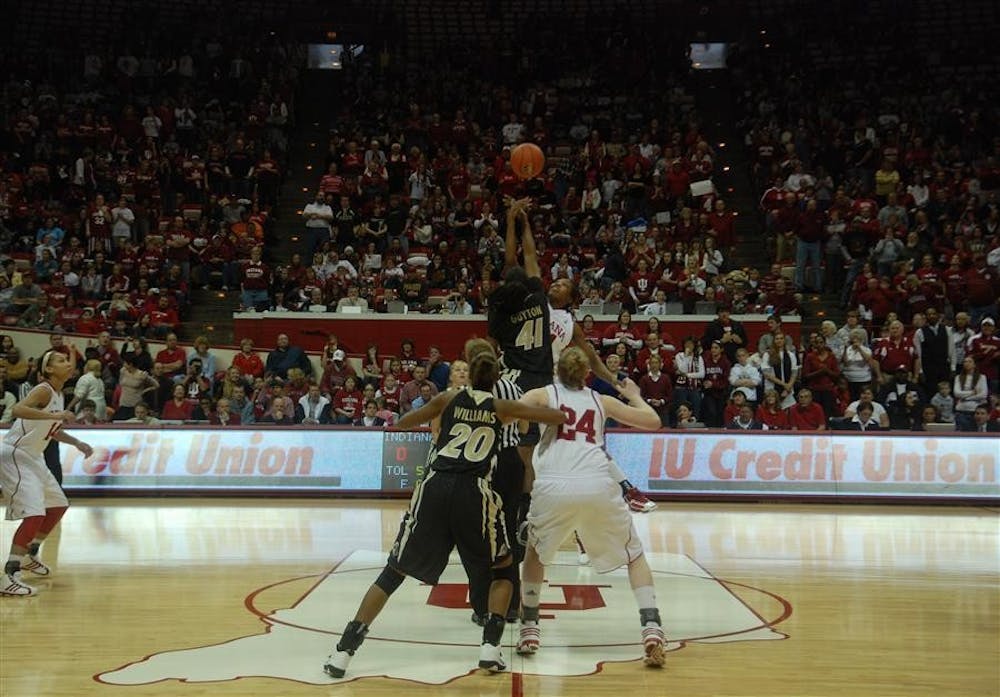Jan. 20 v. Michigan State/Feb. 13 at Michigan State
2011-12 Head-to-Head Results
Michigan State 63, IU 49 (Dec. 30, 2011; Bloomington)
Michigan State 67, IU 47 (Jan. 12; East Lansing, Mich.)
Michigan State 97, IU 68* (March 1; Indianapolis)
*Big Ten Tournament
Last Year’s Record
20-12 (11-5 Big Ten), fifth in Big Ten
Biggest Strength
Rebounding, defense and a solid home court advantage. The Spartans won despite a mediocre offense thanks in large part to the conference’s third best defense (59.9 points per game allowed) and best rebounding margin (+6.3).
Though they ranked sixth in the Big Ten in points scored per game with 67, they didn’t force bad shots on offense — the team field goal percentage of 42 ranked third — and created extra possessions. Sparty’s 9.3 steals per game were second best.
They were just 6-5 off the road last year but are boosted by a loyal fan base in basketball-crazy East Lansing, Mich. MSU boasted the conference’s second best average attendance last year, drawing 7,505 while going 11-3 at home.
Biggest Weakness
Finding a leader on offense. The Spartans lost their three leading scorers from a year ago in guards Porsche Poole and Taylor Alton and forward Lykendra Johnson.
Johnson grabbed the second most rebounds in the Big Ten last season (8.6 per game) and helped the Spartans to second chance opportunities by collecting the most offensive rebounds (101) in the conference.
The next two leading scorers from last year, forward Becca Mills and guard Kiana Johnson, are both sophomores but may wind up as MSU’s main options on an offense that in recent seasons has relied on strength in the low post.
Jan. 31 at Purdue/Feb. 20 v. Purdue
2011-12 Head-to-Head Results
Purdue 82, IU 60 (Jan. 19; Bloomington)
Purdue 90, IU 58 (Feb. 26; West Lafayette)
Last Year’s Record
25-9 (11-5 Big Ten), third in Big Ten
Biggest Strength
Defense and upperclassmen leadership. Though the Boilermakers lost leading scorer Brittany Rayburn to graduation, they still boast a strong backcourt led by junior guards KK Houser and Courtney Moses. Moses was second on the team in points per game a year ago (10.8) while connecting on 90.7 percent of her free throws.
Houser was right behind her, averaging 9.9 points per game and a team-high 125 assists (3.7 per game), 10th in the Big Ten.
As a team, the Boilermakers generally shut down the opposition. Opponents shot only 35.8 percent against them, tying Purdue with Penn State for the best mark in the conference, and Purdue limited opponents to a mere 59.2 points per game.
Biggest Weakness
The Boilermakers had a mediocre turnover margin (+1.65, fifth in conference) and assist-turnover ratio (0.8). Houser, the team’s starting point guard, was the team’s worst offender. She had more turnovers than assists (131 v. 125) last year.
Now a junior, Houser must take better care of the basketball if Purdue wants to improve its offense (65.8 points per game, seventh in conference) from a year ago, and lead her team to a deep NCAA tournament run after the Boilermakers lost to South Carolina in the second round, 72-61, on March 19.
Feb. 7 v. Penn State
2011-12 Head-to-Head Results
Penn State 76, IU 44 (Feb. 2; University Park, Pa.)
Last Year’s Record
26-7 (13-3 Big Ten), first in Big Ten
Biggest Strength
Scoring and a balanced offense. The Big Ten regular-season champions averaged a conference-best 75.7 points per game last year and an impressive +13.2 scoring margin.
Though third-leading scorer Zhaque Gray graduated, they return their top two scorers in junior guard Maggie Lucas (19.5 points per game) and senior guard Alex Bentley (14.1 points per game).
Penn State shot 43.1 percent from the floor last season, second-highest in the conference, and a conference-high 36.2 percent from deep.
Lucas lit up the scoreboard from downtown last season, hitting 41 percent of her three point attempts, third-best in the conference.
In addition, she shot a team-high 88.6 percent from the line and helped out on the boards, grabbing 4.7 rebounds per game. Bentley guided the offense, averaging 4.7 assists per game (156 total, fourth highest in conference).
Biggest Weakness
Rebounding. Despite physical dominance in the low post, Penn State struggled at times to control the boards. Their rebounding margin of +1.8 ranked fourth in conference, but they allowed an average of 40.3 defensive rebounds per game, second to last in the conference.
True, they attempted a league-high 2,106 shots on the year, giving opponents a lot of opportunities for rebounds.But to be considered among the nation’s best (they lost in the Sweet Sixteen to national runner-up Connecticut), the Nittany Lions must do even better on the glass.
Feb. 10 at Wisconsin
2011-12 Head-to-Head Results
IU 62, Wisconsin 60 (Feb. 23; Bloomington)
Last Year’s Record
9-20 (5-11 Big Ten), 10th in Big Ten
Biggest Strength
Perimeter play. The Badgers shot 33.8 percent from three last year, fourth best in the conference, while holding opponents to 29.7 percent three-point shooting, second-best in conference.
Senior guard Taylor Wurtz led the way, averaging a team-high 16.1 points per game. Wurtz will be forced to carry the load offensively once again. The team lost second-leading scorer Anya Covington (10.3 points per game) and Wurtz’s backcourt partner, Jade Davis (team-high 83 assists).
Biggest Weakness
Offense and youth. The Badgers have just six upperclassmen on their roster this year, including Wurtz.
But behind her and junior guard Morgan Paige (10 points per game last season and 32.8 percent on threes), no returning player averaged more than five points per game last season.
Wisconsin struggled in most offensive and defensive categories last season, including scoring (59.3 points per game, second-worst in conference), scoring margin (-7.2, second-worst in conference), field goal percentage defense (44.1 percent, a conference-worst) and rebounding margin (-1.9, second-worst in conference).
Women's basketball Big Ten preview: part two

Get stories like this in your inbox
Subscribe



